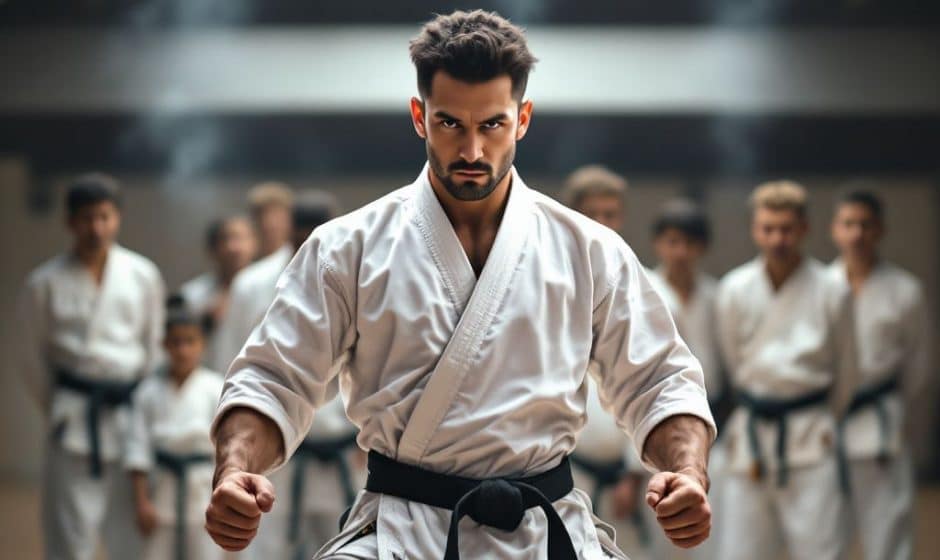Let’s tackle something head-on—what drives a martial artist to transform into an incredible martial arts instructor? Is it purely skill alone, or does teaching call for something more nuanced, like a heart steeped in discipline and a knack for maintaining focus during the ebb and flow of a class? Teaching martial arts is much more than yelling moves or demonstrating flashy techniques. It requires the art of engaging students and nurturing potential.
We’re diving into the nuts and bolts of becoming a standout martial arts instructor while exploring how hormone regulation impacts both your performance and those of your students. Trust me, this dialogue will offer you insights that seamlessly bind the art of teaching with the science of our bodies.
Understanding the Dual Role: Teacher and Instructor
First things first—the terms ‘teacher’ and ‘instructor’ might feel interchangeable, but there’s a slight distinction when you step into a dojo. Being an instructor often involves a more hands-on, practical demonstration, leading students step-by-step through techniques. Teaching, on the other hand, layers in guiding through principles, psychology, and even philosophy. Both roles require you to be on top of your game, mentally and physically.
How Focus Influences the Art of Teaching
Let’s paint a picture: there you are, the center of attention in the dojo, keen on the display of dazzling moves. You’ve mastered “focusing” not just as an intent but as a skilled practice. This is where hormone regulation is critical. Cortisol, the stress hormone, if regulated correctly, keeps you from going haywire when classes don’t go as planned. Training instructors often point out that managing stress effectively aids both in teaching sharp, clear techniques and in conveying calmness to detectors in fraught situations.
Balancing Hormones: Your Key to Success
Speaking of hormone regulation, let’s chat about how it specifically affects your role as an instructor. When stress hits, our bodies up the production of cortisol. This is nature’s rather clunky way of gearing us up to handle pressure. While a bit of cortisol can inject a drive into your sport, too much can derail focus and judgment. Nothing says “distracted instructor” more than brain fog mid-lesson.

Hormone Regulation Strategies for Teaching
- Mindful Breathing: I can’t stress this enough—breathe consciously. It’s not just about “taking a deep breath.” Use breathing exercises to craft how you react to classroom energy.
- Exercise: Regular activity beyond dojo hours plays a massive role in keeping stress hormones at bay and consequence-free adrenaline boosts ready.
- Realistic Goal Setting: Major surprise—it’s not realistic to think a beginner can spar competently in two weeks. Set achievable benchmarks and split milestones into digestible tonics of triumph.
Remember, honing your hormone regulation isn’t just an elite instructor’s choice. It’s essential to channel your authentic self into every class you run.
Crafting an Engaging Learning Environment
Turning reluctant kicks into sharp strikes—how you engage students dictates how they progress. The environment you foster, full of motivation, encouragement, and effort calibration, defines this journey. Let’s look closer.
Encourage Relatable Progression
How do you inspire everyone, from newbies to seasoned practitioners, without diluting the learning? By promoting an inclusive mindset where every small progression is acknowledged. Back to our buddy, cortisol—it thrives on stress-free environments. By minimizing undue pressures, you manage hormone levels where learning fosters genuine joy and grows unfettered.
Mix every observation with a nod of approval—and from what I’ve seen, positive reinforcement isn’t some high falutin’ pedagogy—it’s the warm hearth that welcomes engagement. It shifts focus from dreaded consequences to the thrill of advancement.
Incorporate Health into Instruction

Now gym-ready pragmatism: sustainability is the golden core of martial arts practice. A healthy body and mind translate into longevity in teaching, multiple neat routines into classes, and set the stage for students following their martial paths.
Here are some target areas to focus your training regime as an instructor:
- Strength Training: Aside from enabling you to demonstrate techniques robustly, it fortifies bones, lending support during physically taxing teachings.
- Flexibility: Programming routines that emphasize stretching optimizes freedom of movement—critical as training instructors age gracefully.
- Nutrition: You can wrap this into a lifestyle mantra: mindful eating equals balanced hormone levels. Fuel that refuels functional energy.
Listening as a Core Skill
Never underestimate the power of attentive listening. Observing pupils closely escalates your ability to tune advice to specific developmental needs. Teaching inclines towards reciprocity—exuding openness only sparks the same openness in return. Communication isn’t just what you say but also the silence wherein students feel welcomed.
Unpacking Common Pitfalls
Entering the domain of martial arts instruction isn’t explicitly a sun-drenched stroll. There are snags and snares aplenty. Some teaching errors repeat citywide dojos and carry vital lessons:

- Overwhelming Beginners: Not all students learn linearly. Rely on scaffolded learning—ribs of simplicity strengthening bigger skills through repetition.
- Rigid Format: Flexibility in teaching fosters the mythopoetic worlds of martial arts and showcases its artiform beauty.
- Skipping Personal Development: Anchoring in self-growing pursuits wards off staleness. Dive into personal elasticity with your teaching persona.
Staying a Student
Make being forever a learner a hallmark of your identity as a martial arts instructor. Equip yourself with self-planned rejuvenation periods where reflection ensues. Acknowledge unlearned corridors without shame—they’re streaks open for exploration.
Vulnerability Enabled by Knowledge
Data-driven instruction influences education: feel neither redundant nor bothersome merging tried philosophies with fresh modes. An evolutive mindset paired with abiding thirst for wisdom makes adaptive journeys mutually rewarding with students.
Taking Away Keynotes
- Hormone regulation plays linchpin roles; managing cortisol alone strains and sustains.
- Dual-peek the instructor’s gaze: skilled guidelines create stature through engagement.
- The perplexity of converting teaching skills rests in knowing learning varies distinctly across students.
- Commitment to health in training standards indirectly fuels classrooms assembled with purpose.
- Teaching embodies perennial mastery. Internally reinforcing mindfulness crafts excellence subtly strung.
The initiative of shaping brand-new martial arts champions by refining nurturing qualities into accustomed command benefits for everyone—students prosper in trusted skill homes, instructors equip under ever-accepting curious eyes. Leap with trust into developing prowess anew, from tip to undertone in the artistic sport pedagogy, emboldened with every intention stacked towards growing objectives from solid roots.
Frequently Asked Questions
What is the hormonal system and how does it work?
The hormonal system, also known as the endocrine system, is a network of glands and organs that produce hormones. These hormones regulate various body functions, including metabolism, growth, bone and muscle health, heart function, and sexual development. When a hormone is released from a gland, it travels through the blood to reach its target cells[1][4][5>.
How are hormone levels regulated in the body?
Hormone levels are primarily controlled through negative feedback mechanisms. For example, when the levels of certain hormones, such as thyroid hormones (T3 and T4), rise, they inhibit the release of the hormones that stimulated their production, creating a feedback loop that maintains hormonal balance[4).
What are the signs and symptoms of a hormonal imbalance?
A hormonal imbalance can cause a variety of symptoms, including irritability and fatigue, mood swings and depression, skin dryness, water retention and weight gain, osteoporosis and joint pain, decreased libido, insomnia, and memory issues. These imbalances can be caused by natural life stages like puberty, pregnancy, perimenopause, and menopause, or by other factors such as surgery or stress[2][5).
How can hormonal imbalances be treated?
Hormonal imbalances can be treated with hormone replacement therapy (HRT), which can include systemic hormone therapy, low-dose vaginal products, or bioidentical hormone replacement therapy. These treatments aim to restore stable hormone levels, improving symptoms such as sleep, energy, mood, and skin health. Treatment plans often include medical guidance, testing, and lifestyle adjustments such as nutrition and exercise[2][5).
References



